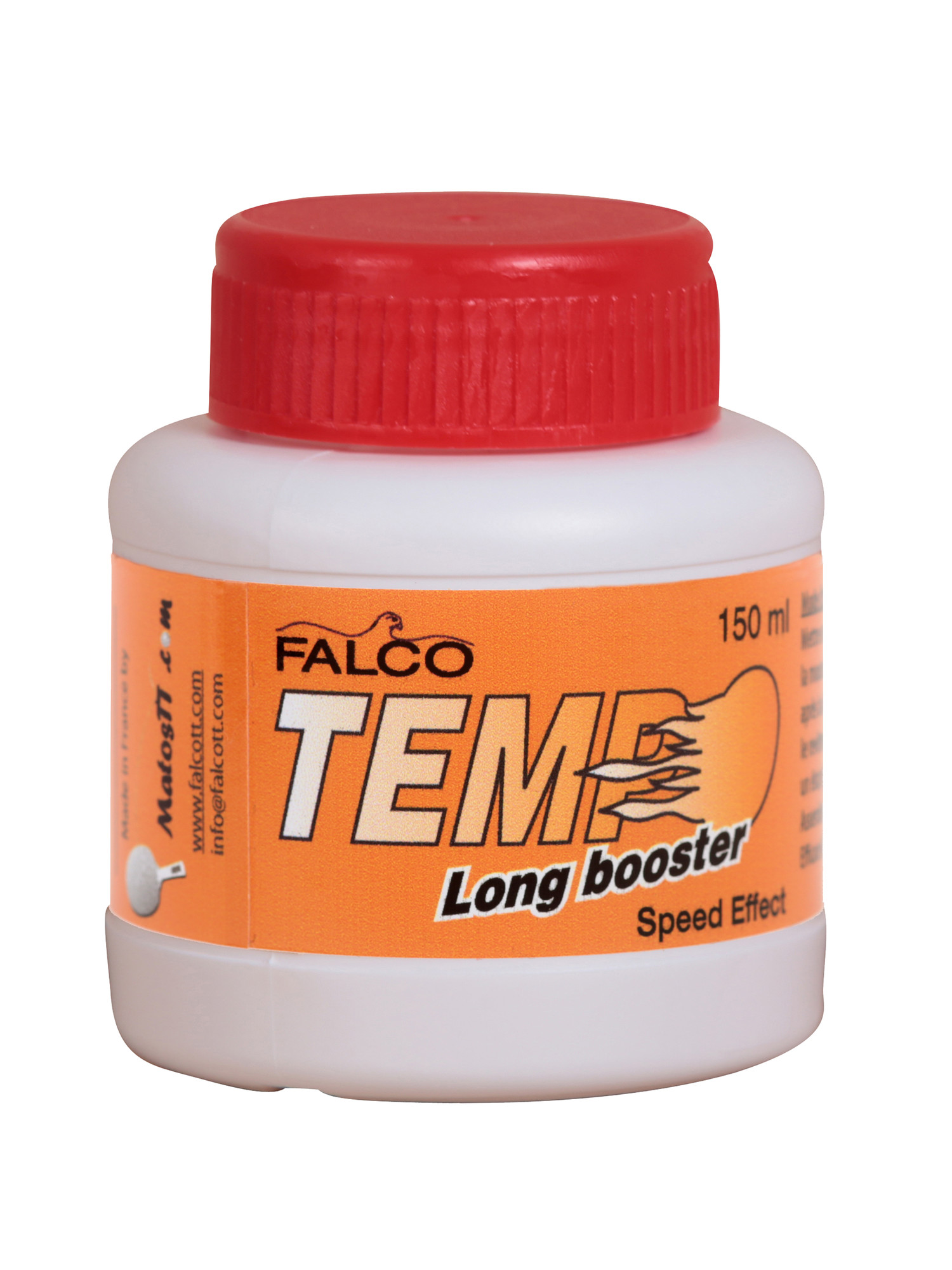Having talked about what booster and speed glue in table tennis is all about, along with their advantages and disadvantages, it’s now time to discuss whether you should be choosing to boost or reglue your table tennis bat.
Should You Boost / Speed Glue?

Photo courtesy megaspin.net. Buy Online
Boosting or speed gluing gives a player some definite advantages and disadvantages, as we talked about previously. So the question really becomes how important are these advantages and disadvantages to you? Anyway, here’s my take on the answer to this question.
Recreational (non-serious) Players – SHOULD NOT Speed Glue but CAN Boost
If you only play occasionally and you don’t really care whether you win or lose, I don’t think speed glue is worth the bother or the expense. You can have a lot of fun with or without speed glue, and you probably won’t play enough to really take advantage of the benefits properly. But if you like to glue up the bat and hit it really hard just for fun, be my guest.
Boosting, on the other hand, is a bit different. Since the booster effect lasts a lot longer than the old speed glue effect (we are talking weeks instead of mere hours), and since booster isn’t expensive and may actually be used to extend the playable life of a rubber, there is a definite case to make for boosting by recreational players. If you are only playing socially and your opponents don’t mind, then why not?
Serious Juniors – SHOULD Boost, But SHOULD NOT Speed Glue
I’m possibly in the minority on this, but I personally feel that if a junior has any intention at all of taking the sport seriously in the future, then they should boost their rubbers (speed gluing is not recommended – too much chance of getting caught, too much expense and hassle, and doesn’t last long enough). Booster is an accepted part of the equipment used by professionals today – so juniors should be exposed to it as soon as possible, and taught how to use it properly to get the most benefit for their own style.
Booster allows players to get more speed and spin, with minimal disadvantages. I can’t imagine tennis coaches arguing that their juniors shouldn’t use modern rackets because they are too fast and powerful – in fact it would probably be the opposite – they’d want their kids using the best technology out there to help them.
Booster makes a significant difference to what you can and can’t do to the ball, and the tactics that can be used – do you really want your child to have to adjust his strokes and tactics when he or she does start to boost? And what is the correct time to do so anyway? At a certain level of play? A certain standard of technique or tactics? Or a certain amount of physical strength? Why not just start them off with booster as soon as they can hit a few balls in a row, and then concentrate on teaching them how to use it for the maximum effect?
Serious Adults – SHOULD Boost, But SHOULD NOT Speed Glue
I guess this mainly depends on your definition of serious. I’m defining serious as someone who plays in table tennis competitions regularly, and trains on a regular basis. If you are trying to win – you want every advantage you can have – especially if your opponents will be using booster against you! Don’t you be the guy who brought a knife to a gunfight.
One important exception to this rule is for the defenders and some pips out players. As a oft-time defender myself, who uses medium pimples on one side and normal rubber on the other, I know that I find it very difficult to chop the ball if I boost the normal side. I’d probably have to double the amount of training I do in order to have a chance of controlling the ball. That’s not an option for me, so I’m using thin normal unglued rubber instead. But when I was attacking with normal rubbers on both sides, it simply made sense to speed glue since it helped my game so much (speed glue was legal back then).
Also, if I was a junior again (oh, how I wish!), I’d be defending with the booster on my normal rubber in the hopes of being another Joo Se Hyuk or Ding Song – without the glue you can forget about it.
Isn’t Boosting Cheating?
Yes it is. According to the ITTF, the only time booster or speed glue can be applied to a rubber is during factory production. So if you put booster or speed glue on your rubber, you are cheating according to ITTF rules.
I personally don’t boost or speed glue even when I use normal inverted rubber on both sides to attack, because I do consider it cheating. But I’m enough of a realist to acknowledge that boosting is rife through pro and elite ranks, and with the ITTF unwilling or unable to do anything much about detecting booster, it is a big sacrifice to ask a professional or rising junior to give away such an advantage to his opponents by refusing to boost. It would be admirable but also suicidal in the top echelons of the sport.
Conclusion
OK – so that’s my thoughts about who should be boosting. The advantages it gives are just too good to pass up for any player serious about the sport. If you are going to take the time and effort to train hard, why not give yourself every advantage you can – or at least keep the playing field level?
| Interested in Purchasing Booster? | Buy Online |

